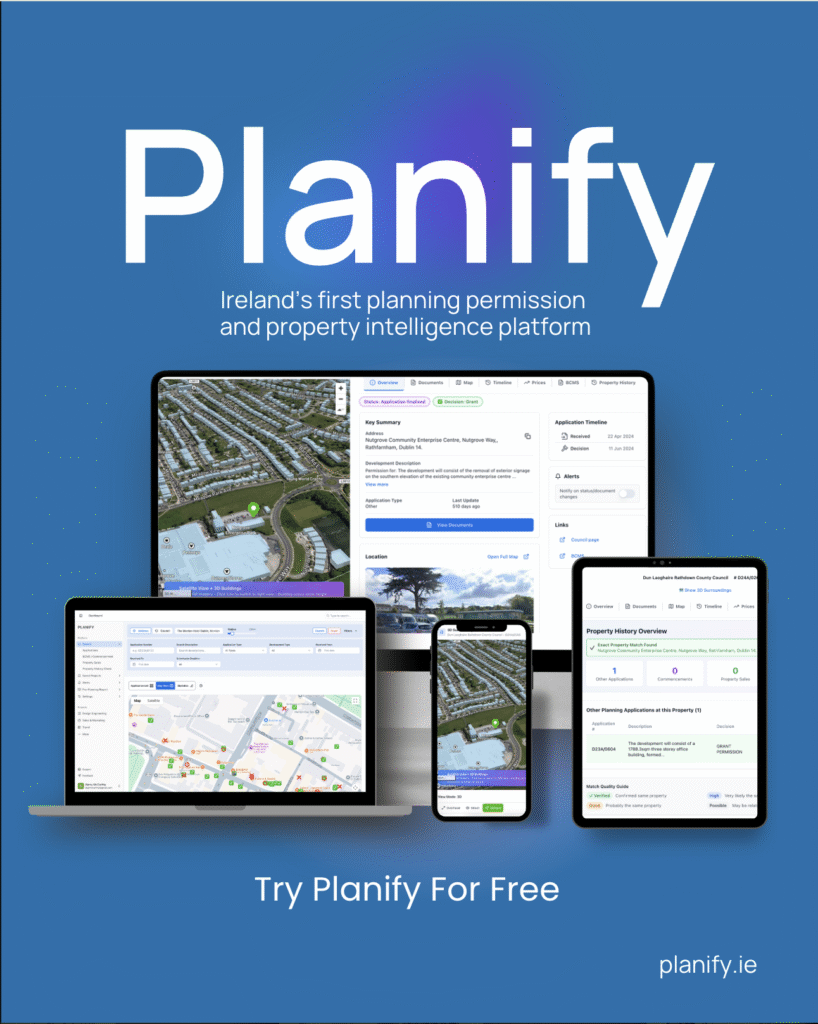Property Prices Rise Despite Deflationary Forces in Ireland
Despite significant deflationary pressures, property prices in Ireland have increased by 4%. The scarcity of properties for sale is the primary driving factor behind this trend, according to a survey conducted by 70 estate agents. The survey, titled “How Much Is Your House Worth? 2024,” evaluates the value of homes in 64 local property markets across Ireland. While the average price hike was 4%, the changes varied widely across different regions, with rural Limerick experiencing a 15% increase and no change in values in Dublin 11. Additionally, Wexford saw a 2% decline in property values over the past year. Out of the 64 markets surveyed, 60 showed inflation despite the impact of successive interest rate hikes, escalating home renovation costs, and an influx of smaller homes into the market due to the departure of small landlords.
Regional Cities Become Unaffordable for Young People
The survey also highlights the increasing challenge faced by young people in affording homes in regional cities. For example, the price of a three-bedroom semi-detached house in Limerick has reached €400,000, prompting couples born in the city to seek more affordable options in locations like Castleconnell and Adare, resulting in a 15% surge in prices outside the city limits. Similarly, outside of Galway city, where three-bedroom homes now cost €387,000, city-born buyers are turning to cheaper towns such as Tuam, Athenry, and Headford, leading to a 10% price increase in county-area properties. Cork city, however, is an exception as new family home developments continue to be built and sold on the open market.
Softening Holiday-Home Market and Resourcefulness in Housing
Certain tourist locations are experiencing a softening in the holiday-home market, attributed to rising living costs and reduced ancillary spending. Wexford, a popular holiday-home destination for Dubliners, saw a 2% decrease in property values. Similar declines were reported in Donegal and Mayo. The survey also reveals a growing trend of people becoming resourceful in finding housing solutions due to the shortage of properties for sale or rent. In counties like Kerry, Carlow, Tipperary, and south Kildare, there is increasing interest in converting pubs and retail properties into living spaces. Additionally, the lack of available homes for sale has led buyers to consider derelict properties, particularly due to a new grant available for restoring such properties. Locations like West Cork, Longford, Kerry, and Tipperary have seen renewed interest in derelict homes.
Impact of Small Landlords Selling Properties
The survey highlights that small landlords are increasingly selling their properties, resulting in a significant number of smaller homes entering the market. This trend has caused apartment prices to remain stagnant in some locations. The departure of small landlords is also impacting the rental market. In Limerick city and Westmeath, potential renters, including transient workers coming to Ireland for employment with foreign direct investment firms, are forced to purchase cheaper properties instead of finding rental accommodations due to the limited availability of rental properties. Buying is becoming a more affordable option than renting and is also gaining popularity among parents sending their children to regional universities.
Trends in Upgrading and Renovating Homes
In Cork city suburbs, there is a growing trend among traders to acquire older three-bedroom semis with large gardens and extend them to double their size, resulting in new four or five-bedroom “forever homes.” However, the survey indicates that buyers are increasingly less interested in purchasing properties that require upgrades compared to a year ago. The value gap between homes in need of work and those ready to move in is widening. Factors such as increased building materials and labour costs, a shortage of building firms available for upgrades, and banks’ reluctance to lend money for properties in need of work contribute to this trend. Moreover, buyers are increasingly attracted to turnkey properties with high Building Energy Rating (BER) certifications due to the availability of “green mortgages,” rising energy costs, and growing environmental awareness.
Other Findings and Conclusions
The survey reveals falling property values for larger, older home types in several mature Dublin suburbs, including Dublin 11, Dublin 7, Dublin 2, Dublin 9, Dublin 1, Dublin 5, and Dublin 6W. The sale prices of larger period properties in Dublin 2 decreased by €70,000 over the year due to escalating refurbishment costs. Additionally, the survey indicates that older couples residing in larger homes are increasingly reluctant to downsize, fearing they may not be able to find suitable smaller homes after selling their current properties. The lack of new apartments and smaller homes available for sale contributes to this trend, as most new developments are designed for rental purposes. This has resulted in a shortage of larger homes and fewer options for buyers of average-sized properties.
The property market in Ireland continues to face challenges, with rising prices, scarcity of supply, and changing buyer preferences. The survey highlights regional variations in price changes and the impact of factors such as interest rate hikes, the departure of small landlords, and the availability of housing grants. It also sheds light on the increasing resourcefulness of buyers and the shift towards purchasing rather than renting. The findings emphasize the importance of considering factors like energy efficiency and turnkey readiness when evaluating property values.







